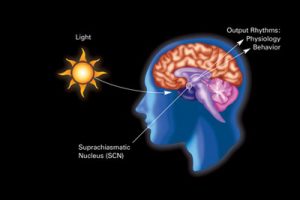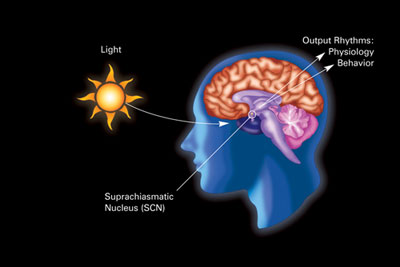By Alex Watkins (News Editor) – Email
 Researchers from Britain’s Cambridge and Edinburgh Universities are now claiming to have discovered the specific mechanism in living beings that directs their bodily clocks, according to ScienceDaily. Additionally, a further study – both of which were published in the journal Nature – posited that the 24-hour circadian clock possessed by human cells is identical to that found in simpler life forms such as algae, and was thus likely found in primitive life forms millions of years ago.
Researchers from Britain’s Cambridge and Edinburgh Universities are now claiming to have discovered the specific mechanism in living beings that directs their bodily clocks, according to ScienceDaily. Additionally, a further study – both of which were published in the journal Nature – posited that the 24-hour circadian clock possessed by human cells is identical to that found in simpler life forms such as algae, and was thus likely found in primitive life forms millions of years ago.
These findings are significant because it was previously believed that DNA was required in order for a cell to have a circadian rhythm, yet the red blood cells studied, which do not contain DNA, exhibited similar 24-hour rhythms, according to ScienceDaily.
Akhilesh Reddy, lead author of the study by the University of Cambridge, said “We know that clocks exist in all our cells; they’re hard-wired into the cell. Imagine what we’d be like without a clock to guide us through our days. The cell would be in the same position if it didn’t have a clock to coordinate its daily activities.”
In order to determine their findings, scientists obtained purified blood cells from healthy humans and incubated them in a dark environment at body temperature. The researchers then tested the cells at set intervals over several days for levels of peroxiredoxins (an antioxidant enzyme which is found in nearly all organisms) and discovered that the substance observed the same 24-hour cycle found in other human cells. While the controls in this aspect of the study determined that the cycle occurred in the absence of environmental changes, the scientists also found that “these rhythms are entrainable (that is, tuneable by environmental stimuli) and temperature-compensated, both key features of circadian rhythms.”
The findings of this study have serious implications for human life. In ScienceDaily, Reddy explained: “We already know that disrupted clocks – for example, caused by shift-work and jet-lag – are associated with metabolic disorders such as diabetes, mental health problems and even cancer. By furthering our knowledge of how the 24-hour clock in cells works, we hope that the links to these disorders – and others – will be made clearer. This will, in the longer term, lead to new therapies that we couldn’t even have thought about a couple of years ago.”
The second study, led by Andrew Millar of the University of Edinburgh’s School of Biological Sciences, proved that the same cycle exists in marine algae by measuring peroxiredoxin levels in algae samples that were also kept in total darkness. The DNA in the algae was not active in the absence of light, yet scientists found that peroxiredoxins maintained the same 24-hour cycle without DNA’s active direction.
As ScienceDaily quoted Millar, “This groundbreaking research shows that body clocks are ancient mechanisms that have stayed with us through a billion years of evolution. They must be far more important and sophisticated than we previously realised. More work is needed to determine how and why these clocks developed in people – and most likely all other living things on earth – and what role they play in controlling our bodies.”


